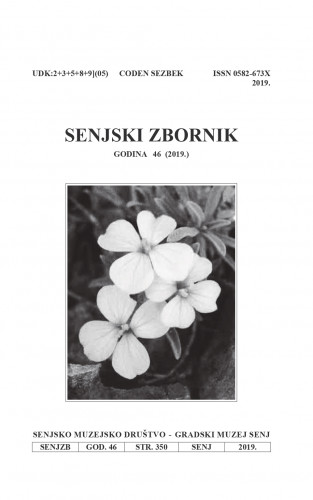Projektom Biospeleološka istraživanja i inventarizacija faune u speleološkim objektima Nacionalnog parka Sjeverni Velebit u suradnji Javne ustanove "Nacionalni park Sjeverni Velebit" i Hrvatskog biospeleološkog društva, biospeleološki je istraženo 5 speleoloških objekata: Jama pod Budinom kosicom, Jama u kuku, Sniježnica u Medvjeđoj dolini, Špilja u Štirovači i Terca. U svakom je objektu sakupljana fauna, mjereni su mikroklimatski parametri te su fotodokumentirani ulaz, unutrašnjost objekta i fauna. Detaljno su taksonomski obrađene skupine pauka (Araneae), jednakonožnih rakova (Isopoda), striga (Chilopoda), dvojenoga (Diplopoda), skokuna (Collembola) i kornjaša (Coleoptera). Rezultati ovog istraživanja značajno su doprinijeli poznavanju podzemne faune Parka te su naglasili važnost i potrebu sustavne inventarizacije podzemne faune speleoloških objekata.; Via the project ‘Biospeleological investigations and inventory of the fauna in the speleological structures of the Northern Velebit National Park’ in collaboration with the Northern Velebit National Park public institution and the Croatian Biospeleological Society, five speleological structures have been biospeleologically investigated: The pit below Budina kosica, the pit in Kuk, Sniježnica in Medvjeđa valley, the cave in Štirovača and Terca. In each structure the fauna was collected, the microclimatic parameters were measured and the entrance, underground spaces and fauna were photographed. Groups of spiders (Araneae), crustaceans (Isopoda), centipedes (Chilopoda), millipedes (Diplopoda), springtails (Collembola) and beetles (Coleoptera) were taxonomically processed in detail. In total, 27 taxa were recorded of which 13 are troglobion, i.e. species completely adapted to life underground. Four species were noted in the park for the first time, and one of them is new to science. The range of the measured air temperatures started from 2.9 to 9.8°C and this shows a great diversity of the habitats of the speleological structures of Northern Velebit, which is evident also by the number of recorded species. These results have complemented significantly to the list of the underground fauna of the park, expanded the knowledge of the recorded species and have highlighted the importance of the systematic inventorying of the underground fauna of speleological structures of all dimensions, small and large. Likewise, it has shown that the underground fauna of the Northern Velebit National Park is extremely interesting and worthy of preservation.
Sažetak

 Senjski zbornik : prilozi za geografiju, etnologiju, gospodarstvo, povijest i kulturu : 46(2019).
Senjski zbornik : prilozi za geografiju, etnologiju, gospodarstvo, povijest i kulturu : 46(2019).